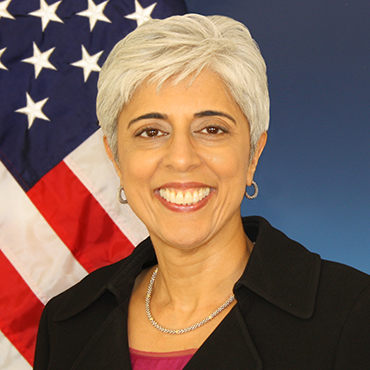DARPA in 2014: Director Arati Prabhakar looks ahead

The specific technologies change, but the research agency's director asserts that the "mission has been unchanged in 55 years."

Since 1958, the Defense Advanced Research Projects Agency has been at the forefront of high technologies – including modern-day staples like the Internet, smart phones and search engines. A lot has changed in nearly 56 years, but DARPA’s core mission has not, according to its director, who has an upbeat vision for the agency’s future.
“Every day we live in a world filled with technologies that trace their roots back to DARPA investments. It’s an old story, but a good and important story about investments we make because of national security needs and priorities that eventually blossom into the commercial world,” DARPA director Arati Prabhakar said in a recent interview with FCW. “Our mission has been unchanged in 55 years, but the geopolitical context we’re in always shapes how we execute that mission.”
For an agency traditionally geared toward developing the latest in military technology, the drawdown after more than a decade of war means that mission execution faces changes, starting in 2014. Much focus will remain on traditional programs such as next-generation Air Force air dominance and Navy missile defense, but emphasis also will shift to other areas of defense, including advancements in traumatic brain injury (TBI) research and treatment.
“We’re rapidly pulling together and dramatically upgrading existing Navy missile capabilities...and we are trying to think in fresh ways about how to extend air capabilities into the next generation, new ways of integrating new technology across many different domains. That’s going to be a big impact story,” Prabhakar said. “But in the next year, we have new areas growing and taking off in terrific directions: brain function research. We’re now part of the presidential BRAIN Initiative ... so 2014 is going to be an important year for those [research efforts] to get off the ground and for building the teams that are going to drive those areas forward.”
The focus on brain research is becoming increasingly critical as troops return from war, many with TBI as well as psychological trauma from combat. Some of DARPA’s work involves development of techniques and devices that help restore active memory damaged by TBI, while other efforts focus on deep brain stimulation and neuro-psychological research and potential treatment known as SUBNETS, Prabhakar said.
“These are sad realities our nation is dealing with, but DARPA brain function work has to work with the national security mission. Wounded warriors are the immediate challenge we all see every day and they’re the inspiration behind revolutionizing prosthetics and restoring active memory and SUBNETS. But that’s only part of what we’re trying to do,” she said. “We ask warfighters to learn and operate complex systems under extreme stress and danger. If you look at that on one hand and on the other what’s happening in science and technology...it’s going to give us ways to heal injury, understand humans at new levels and learn and train on complex systems in new ways. We’re at the beginning of a very long journey.”
As DARPA’s context changes, there are new drivers for the agency’s missions. Today, Prabhakar said, those drivers center on three key areas: the complexity of the national security environment, the globalization of technology and requisite need for agility, and a changing cost equation that requires maximizing every dollar of DARPA’s stagnant budget, which will be about $2.9 billion in fiscal 2014
Those drivers are not limited to DARPA, or even the Defense Department. Other advanced research agencies – such as those connected to the Homeland Security Department and the intelligence communities – likely face the same struggles as DARPA, but neither HSARPA nor IARPA are as widely known, or as well-funded. When asked, Prabhakar said comparing DARPA to other agencies isn’t necessarily a fair evaluation – and doesn’t illustrate the big picture.
“What we do changes every year, every five years or every 10 years, but our core mission and way of doing business – we’re an engine that’s been humming for a long time,” she noted. “The reason we’re able to have phenomenal impact from investments in DARPA is because we’re part of and able to leverage a much larger ecosystem. We’re a small portion of DOD and U.S. research and development, but our dollars go out to universities, the Pentagon, labs, industry and so on. We need that whole ecosystem to work in order to do our DARPA piece of a much bigger ecosystem that’s about showing what’s possible with breakthrough technologies in national security, showing what’s possible to change what people do next.”
NEXT STORY: Corruption and bureaucratic rigidity


